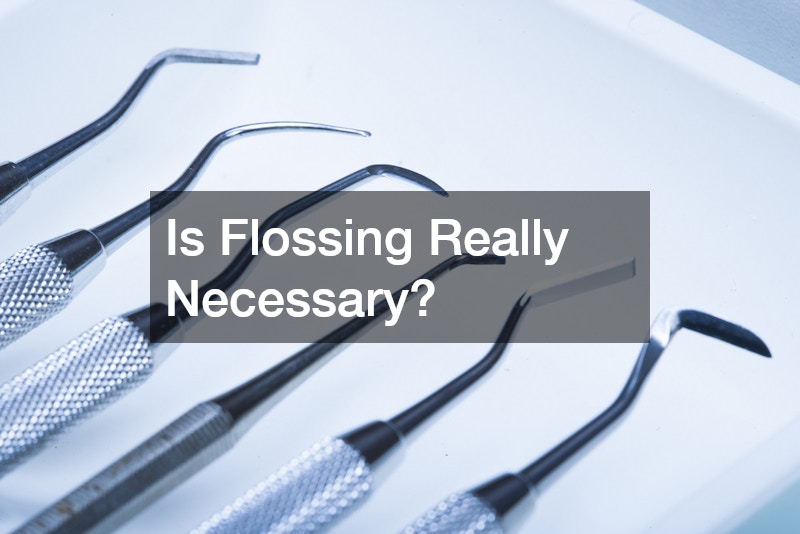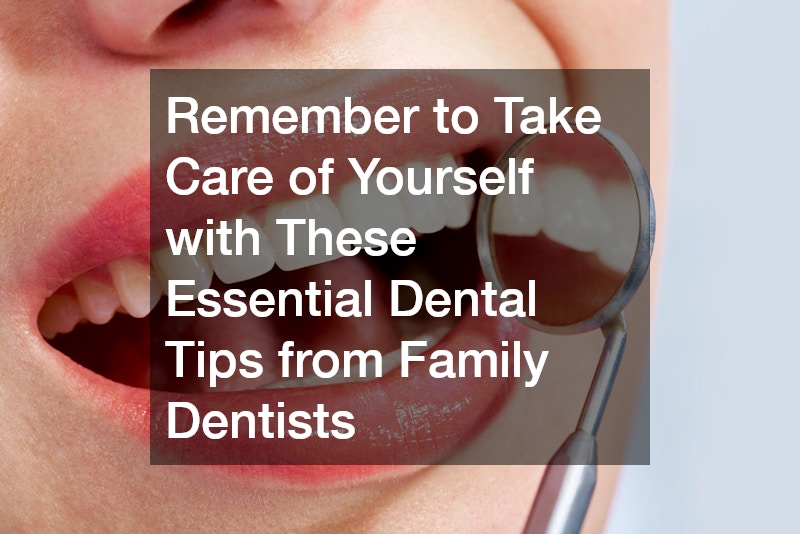We’re all told to stay on top of our health, but how often do we remember to take care of ourselves starting with our mouths? Dental health is a critical part of overall wellness, yet it’s often neglected until tooth pain or gum problems force our attention. Whether you’re overdue for a cleaning or unsure how to care for your teeth properly at home, now is the perfect time to recommit to your oral hygiene.
Family dentistry professionals see firsthand how consistent habits—and small oversights—can add up over time. From preventing decay to maintaining a radiant smile through cosmetic dentistry, your dental office is your partner in health. This guide pulls together expert insights from family dentists to help you care for your teeth the way they deserve. You’ll learn how often to see the dentist, brushing and flossing best practices, mouthwash tips, and even how your diet plays a major role.
Most importantly, it’s a reminder: remember to take care of yourself. Your teeth, gums, and smile are worth the attention. This isn’t just about fresh breath or white teeth—it’s about long-term health and confidence. Let’s explore the real, actionable ways to support your oral health every day.
1. How Often Should I Visit the Dentist?

1.1 Recommended Frequency of Dental Check-Ups
Most dentists recommend visiting the dental office every six months. Regular check-ups allow your dentist to catch issues early and provide cleanings that keep plaque and tartar in check. Even if your teeth feel fine, it’s important to remember to take care of yourself by being proactive rather than reactive.
1.2 Signs That You Need an Immediate Dental Visit
Tooth sensitivity, gum pain, persistent bad breath, or sudden swelling are all signs that you need to seek tooth pain relief right away. Don’t wait for your next scheduled visit—emergency care might be necessary. Dentists can identify underlying issues before they worsen, helping you avoid complications like infections or root canals.
1.3 Benefits of Regular Dentist Visits
Beyond the obvious health perks, routine visits also serve cosmetic dentistry goals. Stains can be removed, minor chips monitored, and any dental crown can be assessed for damage. When you make consistent visits a habit, you’re reinforcing a mindset: remember to take care of yourself in ways that benefit your whole life.
2. What Is the Best Way to Brush My Teeth?
2.1 Techniques for Effective Brushing
Effective brushing involves gentle circular motions at a 45-degree angle to the gum line. Many people scrub too hard, damaging enamel and irritating gums. Dentists often stress that proper technique is more important than pressure.
2.2 Choosing the Right Toothbrush
A soft-bristled toothbrush—manual or electric—is ideal for most people. Family dentistry practices commonly recommend electric brushes for people who need help maintaining consistent pressure and coverage.
2.3 Common Brushing Mistakes to Avoid
Brushing too quickly, skipping the tongue, and using worn-out brushes are common mistakes. To truly remember to take care of yourself, make your brushing routine mindful, not rushed. It only takes two minutes, twice a day, to make a significant impact.
3. Should I Use Mouthwash and How?
3.1 Benefits of Using Mouthwash
Mouthwash isn’t just about freshening your breath. It kills bacteria, reduces plaque, and strengthens enamel with fluoride, depending on the type. For people with gum pain, a therapeutic rinse can be especially helpful.
3.2 Different Types of Mouthwash
There are cosmetic mouthwashes that mask odor, and therapeutic types that combat bacteria, gingivitis, and decay. Talk to your cosmetic dentist or family dentist to find the best one for your needs.
3.3 Proper Technique for Using Mouthwash
Swish for at least 30 seconds and avoid eating or drinking immediately afterward. Remember to take care of yourself by making mouthwash a consistent part of your routine—it’s a small action with big benefits.
4. How Can I Whiten My Teeth Safely?

4.1 Professional Teeth Whitening Options
In-office whitening treatments provide fast, safe, and lasting results. Cosmetic dentistry professionals use peroxide gels and laser treatments that minimize sensitivity while maximizing brightness.
4.2 At-Home Teeth Whitening Methods
Over-the-counter trays and strips are widely available, though they’re less potent than professional solutions. Be cautious with DIY methods like baking soda or lemon juice—dentists advise against anything abrasive or acidic.
4.3 Risks Associated with Teeth Whitening
Excessive whitening can lead to sensitivity and enamel damage. Always consult your cosmetic dentist to choose safe products and avoid overuse. Again, the goal is to remember to take care of yourself—not just for looks, but for lasting oral health.
5. What Foods and Drinks Should I Avoid?
5.1 Understanding Acidic and Sugary Foods
Sugar fuels bacteria that cause cavities. Acidic foods—like citrus and vinegar—can erode enamel. It’s fine to enjoy these in moderation, but rinse your mouth afterward and avoid brushing immediately after acidic meals.
5.2 Drinks That Harm Enamel
Soda, sports drinks, and wine are all culprits. Even juice can be problematic. Using a straw helps reduce contact with your teeth. If you’re visiting your dentists office regularly but still seeing erosion, diet may be the reason.
5.3 Foods That Can Stain Your Teeth
Coffee, tea, and dark berries are staining offenders. Remember to take care of yourself by rinsing with water after consuming them, or talk to your cosmetic dentist about stain-resistant sealants or whitening touch-ups.
6. How to Prevent Gum Disease?
6.1 Early Signs of Gum Disease
Bleeding while brushing, gum pain, and persistent bad breath are early warning signs. These often go ignored—but they shouldn’t. If your gums bleed regularly or feel swollen, that’s your body signaling that something isn’t right. Gum disease starts quietly, but it doesn’t stay that way. Redness, tenderness, or gums pulling away from teeth are all early markers of gingivitis. Left untreated, this can progress to more severe forms like periodontitis, which can result in tooth loss and systemic health issues. Catching symptoms early allows for easier, less invasive treatment. Remember to take care of yourself before gingivitis progresses to periodontitis.
6.2 Importance of Flossing
Flossing removes plaque between teeth where brushes can’t reach. It’s essential for gum health and preventing inflammation. Plaque buildup between teeth creates a breeding ground for harmful bacteria that cause decay and gum disease. Even the best toothbrush can’t reach into those tight spots, which is why flossing is so critical. When done properly, flossing stimulates the gums, increases circulation, and helps strengthen tissue. If you’re unsure of your technique, your dental office can show you proper flossing and recommend floss types that suit your needs—waxed, unwaxed, tape-style, or picks.
6.3 Professional Treatments for Gum Health
Deep cleanings, scaling, and root planing are common treatments. These go beyond standard cleanings to target bacteria beneath the gumline and smooth root surfaces to promote healing. Your dentist may also apply localized antibiotics to treat infection. Family dentistry providers can personalize care plans based on your gum health history, current condition, and risk factors. Regular treatment can reverse damage and improve your overall health. It’s not just about teeth—it’s about reducing inflammation in your whole body and improving quality of life. Routine periodontal checkups keep small problems from becoming big ones.
7. Is Flossing Really Necessary?

7.1 Benefits of Daily Flossing
Yes, flossing is non-negotiable. It helps prevent decay, gum pain, and bad breath. By disrupting plaque formation and removing trapped food particles, it significantly lowers your risk of gum disease. Flossing may seem like a small habit, but over time, it’s a major player in preserving your teeth and gums. Neglecting to floss can lead to tartar buildup, which only a dental professional can remove. Daily flossing supports your overall oral hygiene and is a cornerstone of the reminder to take care of yourself.
7.2 Correct Flossing Techniques
Use a gentle sawing motion and curve the floss around each tooth in a “C” shape. Don’t snap the floss into your gums, and make sure to reach below the gumline. Take your time with each tooth and use a fresh section of floss as you move along. Gums may bleed slightly at first if you’re new to flossing—that’s normal and should subside within a week. Many dental crown issues start with neglecting the gum edge, so flossing carefully around restorations is especially important. Ask your dental provider for a demo during your next visit.
7.3 Alternatives to Traditional Flossing
Water flossers and interdental brushes are great for people with braces or mobility issues. They use water pressure or soft bristles to dislodge debris and reduce plaque between teeth. These tools are especially helpful for patients with implants, bridges, or crowded teeth. Floss picks and reusable silicone sticks can also be useful, especially on the go. Ask your dentist for recommendations. Whatever method you choose, make it part of your daily self-care ritual. Consistency matters more than perfection.
8. How Do I Deal With Dental Anxiety?
8.1 Communicating with Your Dentist
If you’re nervous, tell your dentist. Most dentists are trained to work with anxious patients and can adjust their approach. Open communication leads to better care. Letting the staff know ahead of time allows them to prepare accommodations—whether that means more breaks, simpler explanations, or using calming techniques. Family dentistry practices, in particular, are often equipped with comfort techniques such as warm towels, quiet rooms, or even therapy dogs. You’re not alone in your fear, and your provider wants you to feel safe and supported.
8.2 Techniques to Manage Anxiety
Distraction methods like headphones or guided breathing can help. Try listening to calming music, a podcast, or an audiobook to take your mind off the procedure. Some patients find it helpful to schedule early appointments to reduce anticipation and get it over with first thing in the day. Visualization, mindfulness, and progressive muscle relaxation are other useful tools. Bring a stress ball or fidget item if that helps. The most important thing is to remember to take care of yourself emotionally as well as physically.
8.3 Sedation Options Available
From mild sedation with nitrous oxide to more advanced options, many dental offices offer choices. Oral sedatives or IV sedation are often available for more invasive procedures or high anxiety patients. Your dentist will assess your medical history, current medications, and level of discomfort to find the best fit. Don’t hesitate to ask what’s available. Discuss what’s available if fear is keeping you from getting the care you need. Being sedated doesn’t mean being unconscious—it just means being more comfortable and in control during treatment.
9. Can My Oral Health Affect My Overall Health?
9.1 Connection Between Oral and Systemic Health
Oral bacteria can enter the bloodstream and affect the heart, lungs, and even pregnancy outcomes. Gum disease has been linked to diabetes and cardiovascular issues.
9.2 Dental Conditions That Impact Other Health Issues
Infections in the mouth can complicate other conditions like arthritis and respiratory disease. That’s why it’s critical to remember to take care of yourself in every aspect—including your mouth.
9.3 Importance of Preventative Care
Preventative cleanings, fluoride treatments, and x-rays all help catch problems before they become serious. Your dentist isn’t just preserving your smile—they’re protecting your health.
10. What Role Does Diet Play in Dental Health?

10.1 Nutrients Essential for Healthy Teeth and Gums
Calcium, vitamin D, and phosphorous strengthen enamel and bone. Vitamin C supports gum health. Whole foods, leafy greens, and dairy are excellent sources.
10.2 How to Create a Tooth-Friendly Diet
Avoid processed foods and aim for balanced meals. Crunchy fruits and veggies like apples and carrots act as natural toothbrushes. A thoughtful diet supports everything from dental crown longevity to reduced gum pain.
10.3 Foods That Naturally Clean Your Teeth
Celery, apples, and raw nuts can help scrub teeth during chewing. Cheese also neutralizes acid and stimulates saliva. Include these snacks as part of your effort to remember to take care of yourself through smart eating.
Conclusion
Oral health isn’t a separate issue—it’s a vital part of your total well-being. Regular visits to your family dentist, a consistent at-home routine, and informed lifestyle choices all contribute to the health of your teeth and gums. Whether you’re managing tooth pain relief or considering cosmetic dentistry, every step you take matters.
Let this be a reminder to take care of yourself—not just during dental emergencies, but every single day. Make time for brushing and flossing. Schedule your next check-up. Ask questions when something doesn’t feel right. Your smile deserves consistent care, and your health deserves attention beyond the surface.
From reducing gum pain to protecting dental crowns, from finding the right cosmetic dentist to making your dental office a place of comfort—these tips are here to support your journey. Every effort counts. Every habit matters.
So, remember to take care of yourself. Start with your teeth. Your future self will thank you for it.

